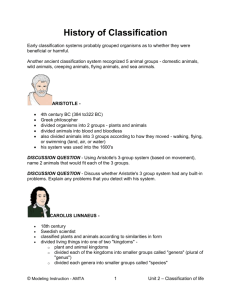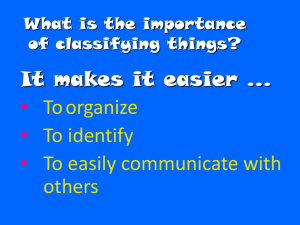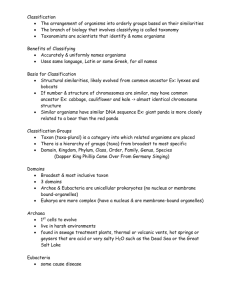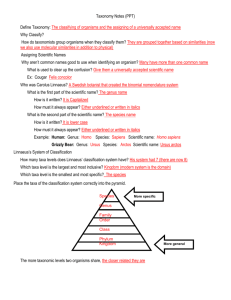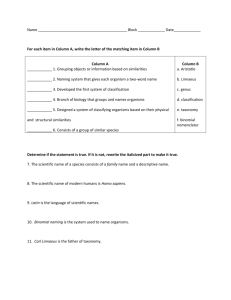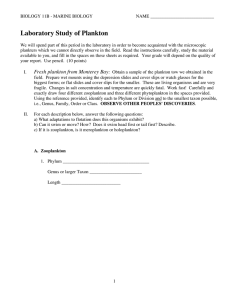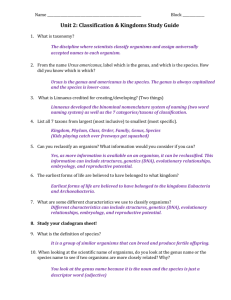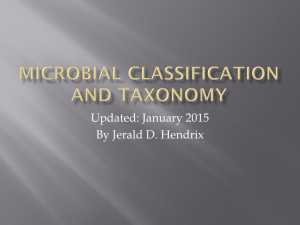Classification of Living Things (Notes) Beginnings Aristotle wanted
advertisement
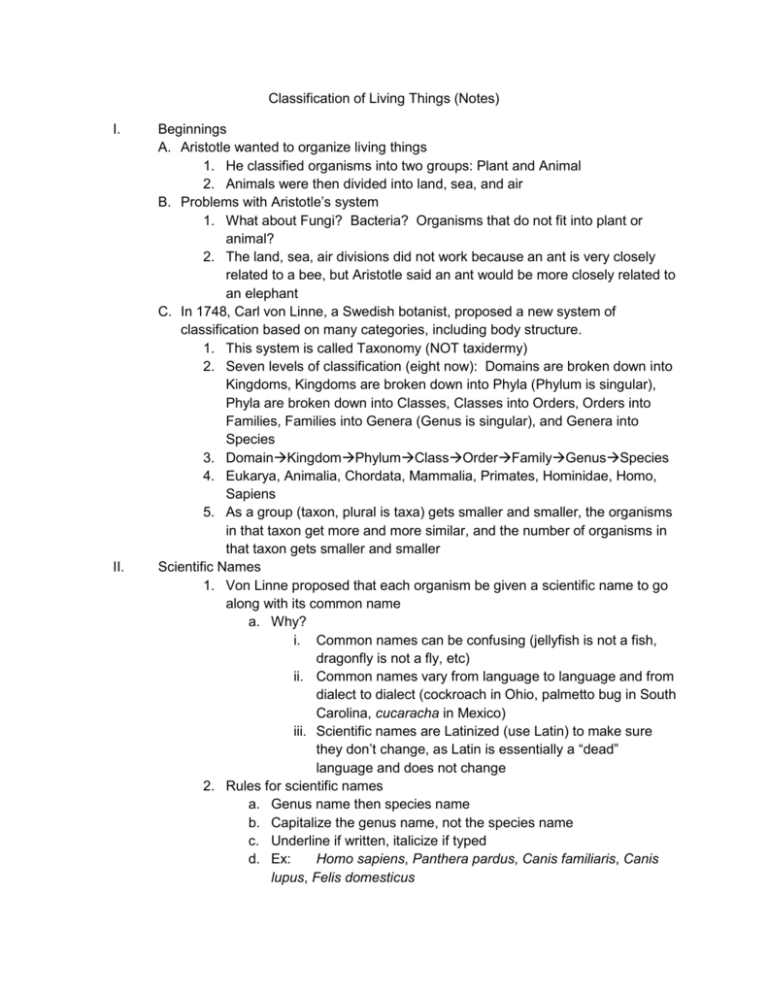
Classification of Living Things (Notes) I. II. Beginnings A. Aristotle wanted to organize living things 1. He classified organisms into two groups: Plant and Animal 2. Animals were then divided into land, sea, and air B. Problems with Aristotle’s system 1. What about Fungi? Bacteria? Organisms that do not fit into plant or animal? 2. The land, sea, air divisions did not work because an ant is very closely related to a bee, but Aristotle said an ant would be more closely related to an elephant C. In 1748, Carl von Linne, a Swedish botanist, proposed a new system of classification based on many categories, including body structure. 1. This system is called Taxonomy (NOT taxidermy) 2. Seven levels of classification (eight now): Domains are broken down into Kingdoms, Kingdoms are broken down into Phyla (Phylum is singular), Phyla are broken down into Classes, Classes into Orders, Orders into Families, Families into Genera (Genus is singular), and Genera into Species 3. DomainKingdomPhylumClassOrderFamilyGenusSpecies 4. Eukarya, Animalia, Chordata, Mammalia, Primates, Hominidae, Homo, Sapiens 5. As a group (taxon, plural is taxa) gets smaller and smaller, the organisms in that taxon get more and more similar, and the number of organisms in that taxon gets smaller and smaller Scientific Names 1. Von Linne proposed that each organism be given a scientific name to go along with its common name a. Why? i. Common names can be confusing (jellyfish is not a fish, dragonfly is not a fly, etc) ii. Common names vary from language to language and from dialect to dialect (cockroach in Ohio, palmetto bug in South Carolina, cucaracha in Mexico) iii. Scientific names are Latinized (use Latin) to make sure they don’t change, as Latin is essentially a “dead” language and does not change 2. Rules for scientific names a. Genus name then species name b. Capitalize the genus name, not the species name c. Underline if written, italicize if typed d. Ex: Homo sapiens, Panthera pardus, Canis familiaris, Canis lupus, Felis domesticus III. e. Carl von Linne was so happy with his development that he changed his name to Carolus Linnaeus Modern taxonomy A. A tool used by taxonomists to help identify organisms is called a dichotomous key B. A dichotomous key is like a flow chart with choices and directions C. A REALLY Short Example: 1. a. wings covered by an exoskeleton ………go to step 2 1. b. wings not covered by an exoskeleton ……….go to step 3 2. a. body has a round shape ……….ladybug 2. b. body has an elongated shape ……….grasshopper 3. a. wings point out from the side of the body ……….dragonfly 3. b. wings point to the posterior of the body ……….house fly

